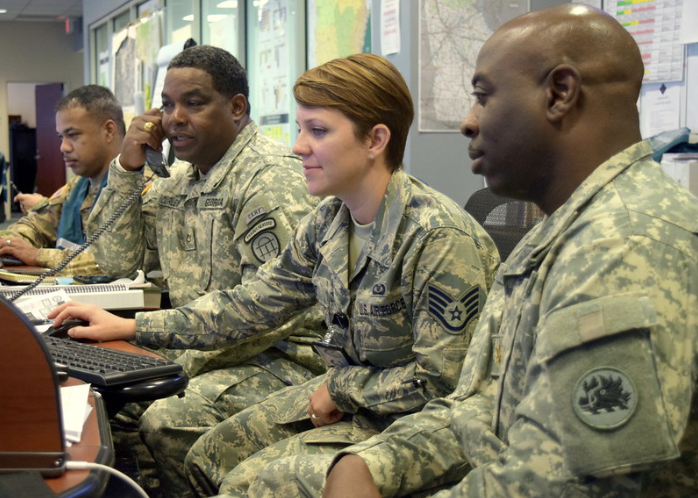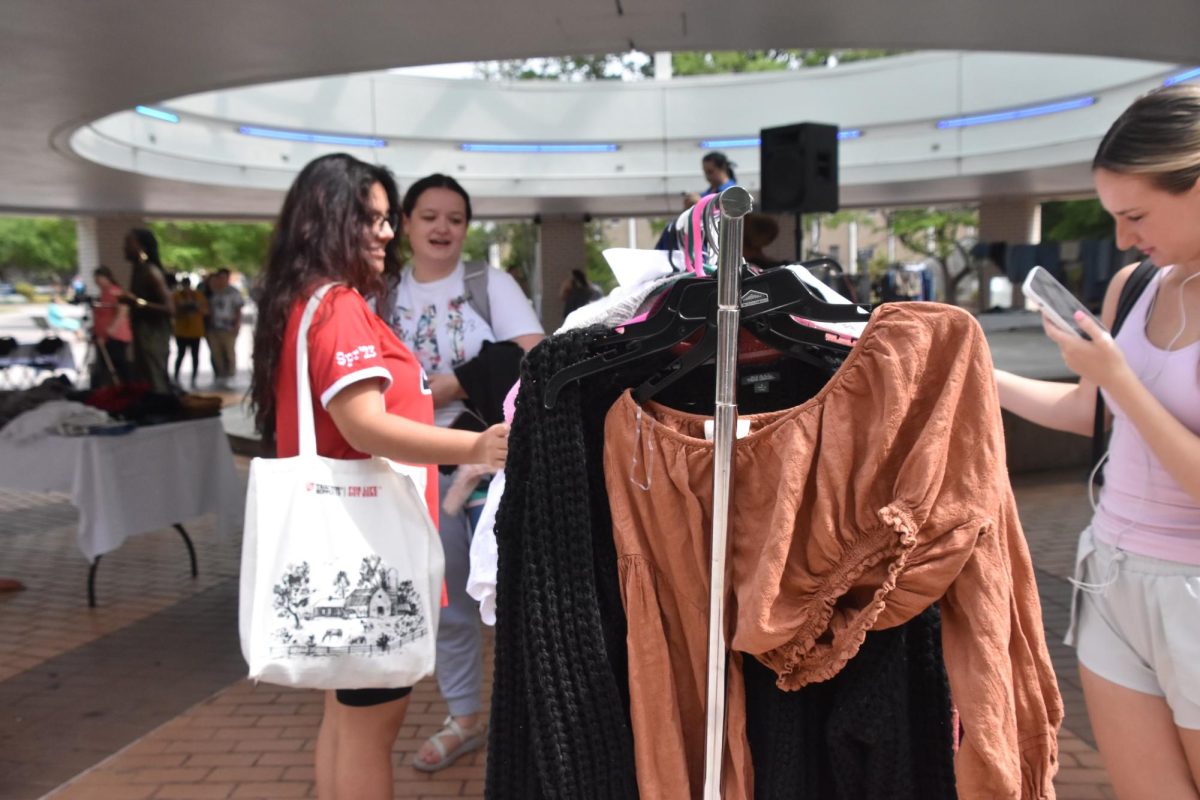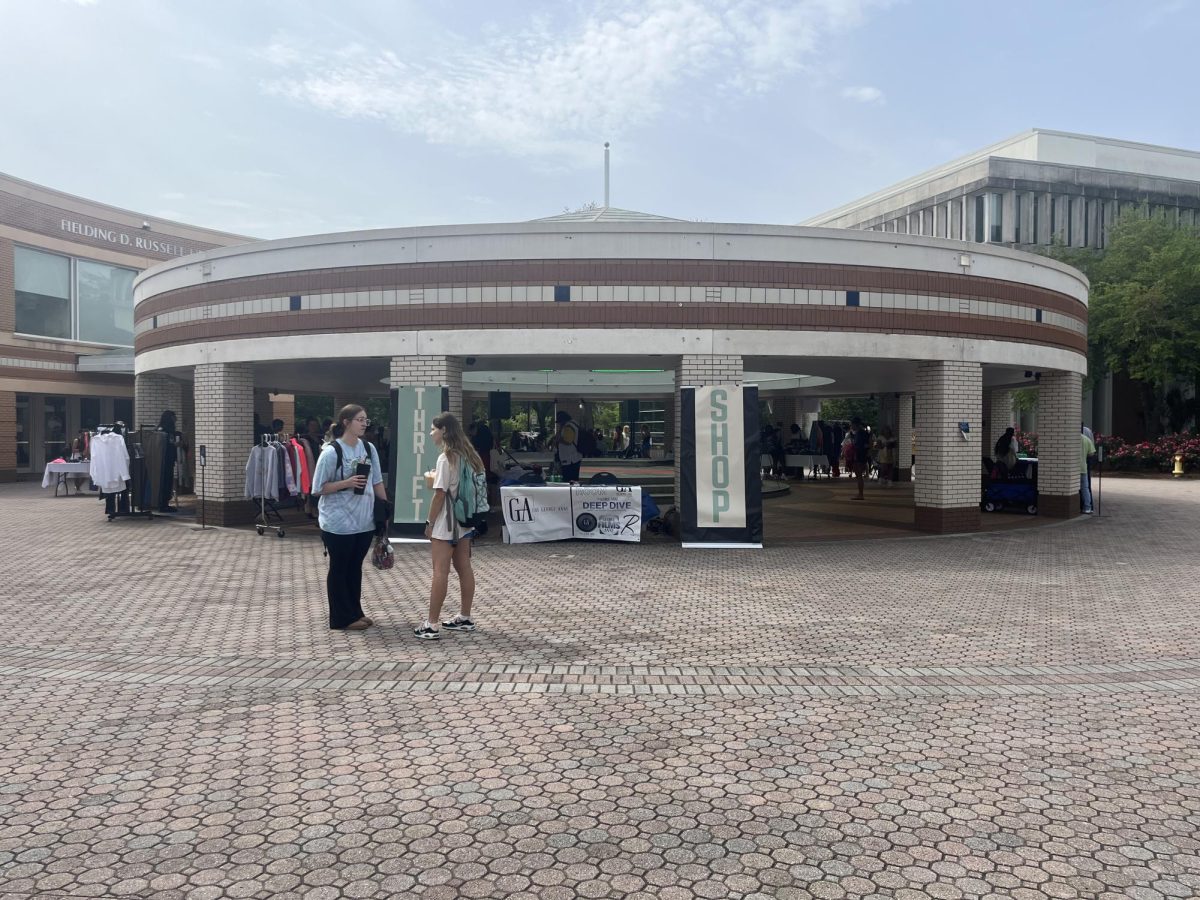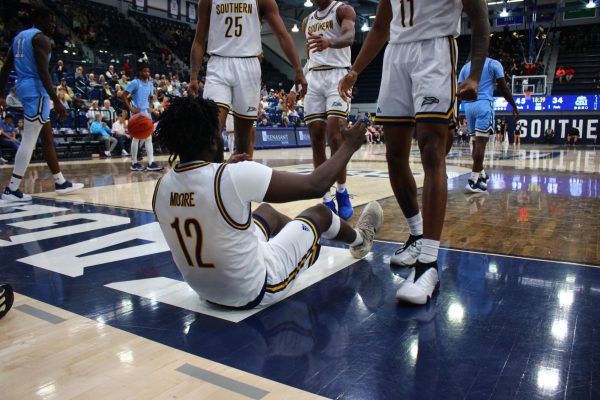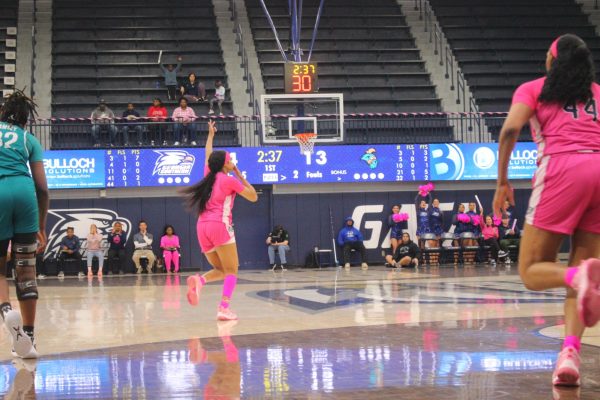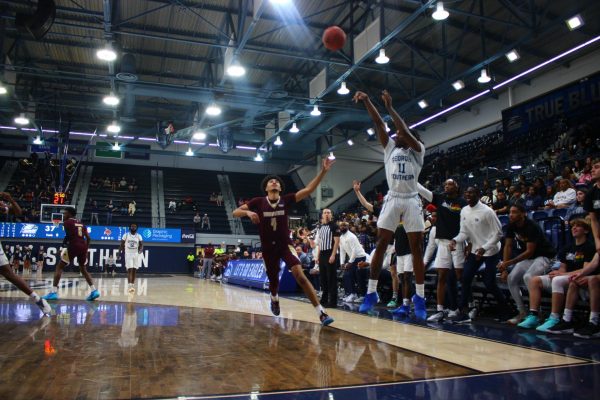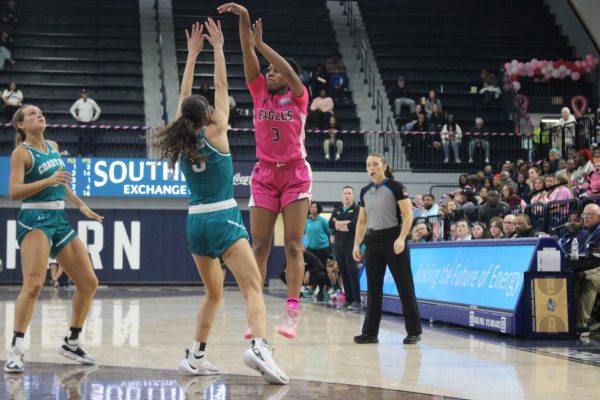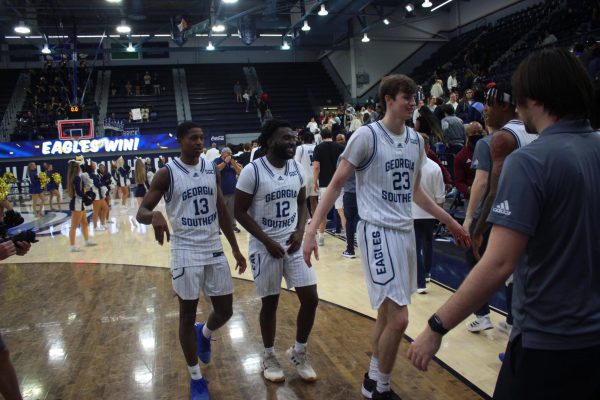GS Athletics Budget Rising after Joining Sun Belt
February 21, 2017
The budget allocation for Georgia Southern athletics continues to increase, spurred by the 2014 decision to move up to FBS-level football and join the Sun Belt Conference, as well as mandatory scholarship additions.
FBS move
In 2013, the year before joining the FBS and the Sun Belt, the GS budget for athletics was a shade over $13 million. In 2015, the total athletic budget sent by GS to the NCAA was over $21 million.
GS athletic administrators attributed the increase chiefly to the move up to the Football Bowl Subdivision. Jeff Blythe, Georgia Southern’s Associate Athletic Director for Business Operations, has dealt with the athletic budget for the past 10 years.
“When you move up to the FBS level, it requires 85 scholarships, so you have 22 scholarships that you have to add to the football budget,” Blythe said.
Title IX requirements
Blythe explained that according to Title IX regulations, Georgia Southern was then required to add at least 22 scholarships to women’s athletics. This prompted the founding of two new programs, one of which was facilitated by current Associate Athletic Director for External Affairs, Larry Mays.
“I was director of golf and we hired a women’s coach and started that program and at the same time we started a rifle program,” Mays said.
The Title IX requirements also brought about additional scholarships in swimming and diving as well as track and field.
“The biggest cost difference was the increase in scholarships,” Blythe said.
The difference between the athletic budgets in 2013 and 2014, the years before and after joining the Sun Belt, was over $5.5 million.
Blythe added that the 2016 yearly budget was done differently from before, in a more comprehensive way – including multiple facilities expenses such as new turf at Paulson Stadium. This led to the 2016 number appearing drastically higher at over $30 million, but that number, Blythe said, is not comparable to the previous budgets.
Travelling cost
The sports not directly affected by the move in terms of scholarships, such as men’s basketball, now need more funding for travel. Sun Belt opponents tend to be further from Statesboro than those in the Southern Conference.
“We went from a bus league to a league where you have to jump on airplanes,” Georgia Southern head men’s basketball coach Mark Byington said. “It’s just something that’s unavoidable.”
Byington said that while competing in the Sun Belt, the resources provided by the school for him to run his program have been “adequate”. Byington worked as an assistant coach at the University of Virginia in 2004-2005 and at Virginia Tech in 2012-2013, two schools in Power Five conferences with larger athletics budgets.
“We’ve got to be more mindful of our budget and we’ve got to make decisions probably more well in advance,” Byington said. “There’s times where we could fly, but we’ve got to save some money by being on a bus.”
The idea behind moving to the FBS is to ultimately attract more students to Georgia Southern. Prominence in media and expanded marketing are two key goals of the athletic administration which believes this could pull more students to the university.
“The hope was that because we are more on the forefront of the national media, playing the Georgia’s and the Georgia Techs of the world rather than the Furman and the Citadels of the world, that more students would be attracted to Georgia Southern, and thus the enrollment would go up,” Blythe said.
When enrollment goes up, the total budget goes up. Since 2014, while the total athletics budget has risen substantially, total enrollment has only increased by 156 students.
Athletic budgets impact each program from top to bottom, including student-athletes. Jake Abraham was a member of the Georgia Southern football team from 2012 to 2016. A former finance major, he now attends graduate school and is looking to get a Master’s in Business Administration. He believes recruiting could be a valuable use of the increased budget.
“I think it is more useful to go towards recruiting due to our new national spotlight,” Abraham said. “Any extra investment into recruiting is well spent.”
The millions of dollars added to the Georgia Southern athletics budget over the past seven years will continue to be put to work towards both drawing students to the university and a growing geographical influence for athletic marketing. As Georgia Southern completes year four in the Sun Belt and prepares to consolidate with Armstrong State University, its athletics program continues to increase its financial magnitude and amplify its visibility.

